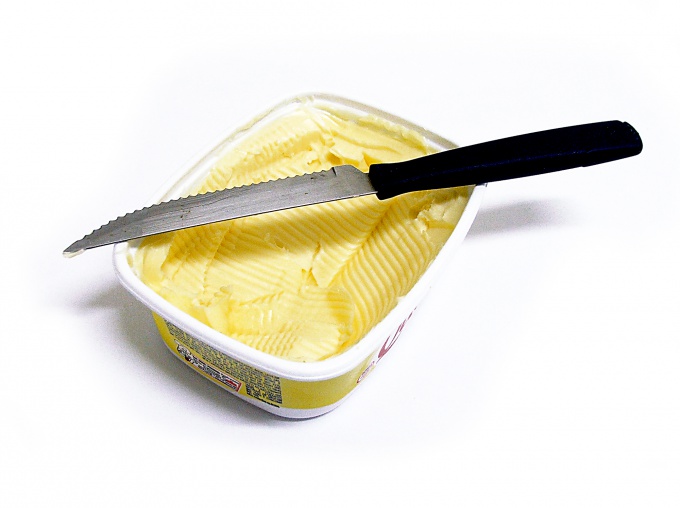Instruction
1
On the package is always specified the type of butter: "Butter", "Amateur" or "Peasant". Traditional creamy butter has a fat content of 82.5% as "Amateur" - 78%, "Peasant" is 72.5%. If you specify a fat content of below 70% - before you spread.
2
The composition of butter must not include vegetable fats. Quality product only consists of natural cream and whole milk. The presence of palm, peanut, coconut oil or so-called "milk fat substitute" must be accompanied by the words "Margarine" on the package.
3
The oil from natural cream in winter is white. But the summer cream butter has a lovely yellow tint that changes with the inclusion of the summer diet of the cows fresh grass. Yellow butter in winter give only artificial dyes.
4
Chilled creamy butter must be soft and easily spreadable on a sandwich. Oil crumbles and falls apart? So, the formula of the product was substantially changed.
5
Try to determine the quality of the oil by smell. Not one artificial flavor does not fully recreate the smell of real butter. Natural oil has a clean, without impurities, subtle creamy smell. If the smell through the package, it can be assumed that pack a scented fake.
6
Choosing the oil is loose, examine the slice of the product. Real creamy butter on the structure of dense, dry, slightly shiny. Perhaps the performance of the rare drops of moisture.
7
Often information about the presence of vegetable oils "hide" by using a small font. If you read the composition of the product, it is better to refuse purchase. Adding the prefixes "extra", "special", "traditional", "old Russian" to the name of the oil is likely to indicate a combined product made according to specifications and not according to GOST.
8
Choosing a light sandwich or oil, study the composition. If the product includes more than 50% of the milk, it should be called milk-vegetable mixture, if less than 50%, the vegetable-milk mixture.
Note
Fat "Peasant" oil of 72.5%. This oil is made exclusively from natural cream and contains no vegetable additives, no preservatives. It tastes salty, like a real country butter. To mislead the consumer, the manufacturers slightly change the name of the oil: "Peasant" becomes a "Peasant" or "Krestjanskoe". The composition of this oil may contain additives.
Useful advice
Present "Vologda butter" has long been considered the best butter in Russia. Before you butter from Vologda, if it meets the following parameters: storage time less than 1 month (after one month of storage the product should be sold as "butter, unsalted"), the fat content of 82.5 %, there is no division into grades, without adding salt. The name "Vologda butter" can be applied only to the product manufactured at the enterprises located on the territory of the Vologda region. Everything else "Vologda butter" is counterfeit.
